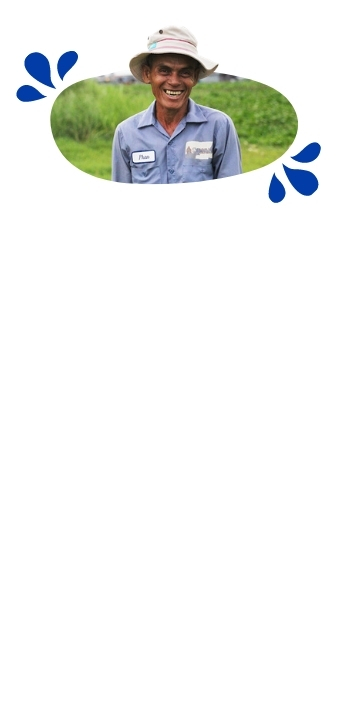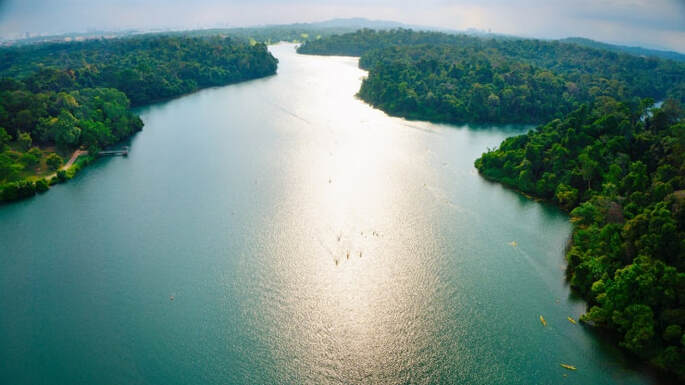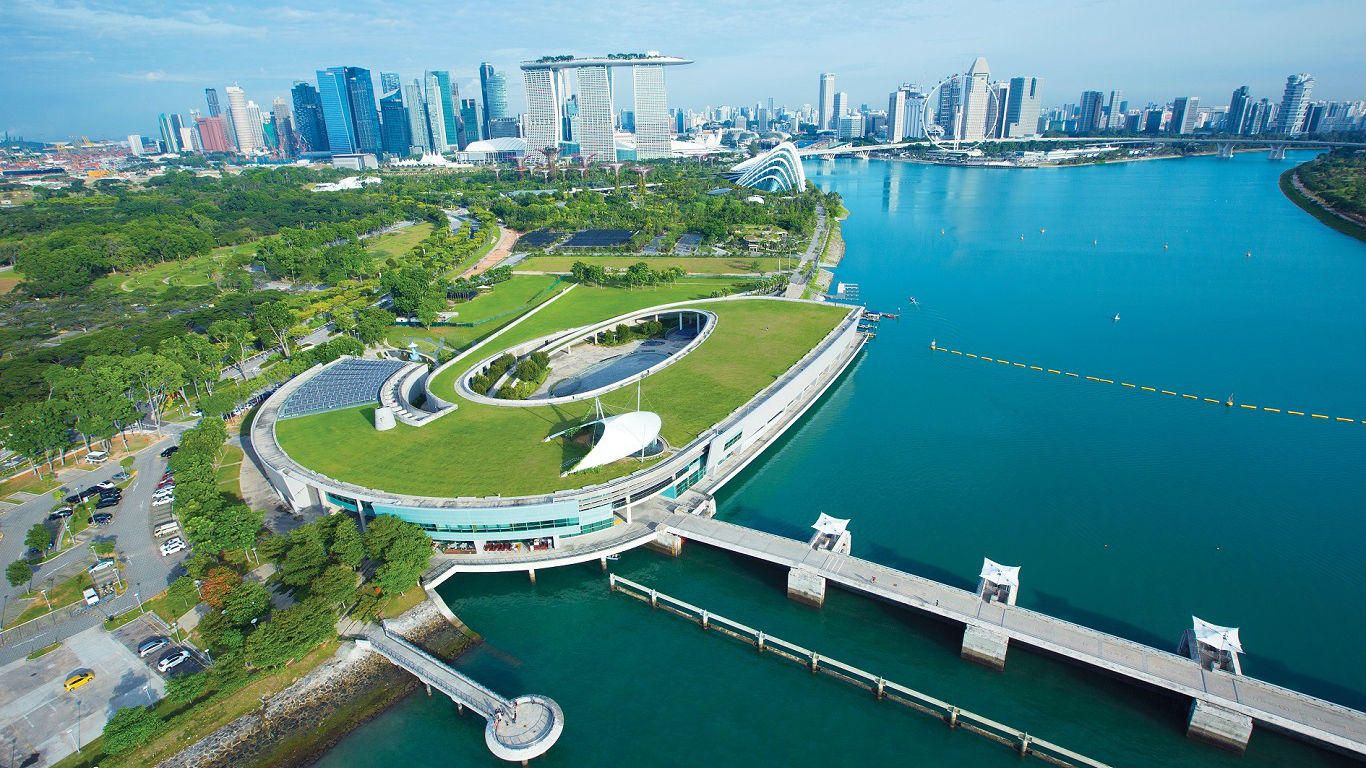Our Blog / Water Facts / Current Page
The Four National Taps
Source: https://www.pub.gov.sg/watersupply/fournationaltaps
Growing up in Singapore, I was always taught to conserve water in school and even as I entered the working world, I was made aware of how my actions contribute to water security. Despite this, I’m not sure I understood its importance, and I don’t feel that I’m alone in that. I, and many others, underestimate how critical water is to us, and we take our water supply for granted.
Being an essential resource for survival, water underpins a nation’s stability and allows her citizens to thrive and build stable lives. Our forefathers recognized this and established a strong foundation to ensure future generations wouldn’t need to go through the struggles they faced with water security. In this blog, I explore Singapore’s past and present relationship with our water supply.
Singapore's oldest reservoir, MacRitchie Reservoir
Source: https://www.visitsingapore.com/see-do-singapore/nature-wildlife/reserves/macritchie-nature-reserve/
The First Tap
When Stamford Raffles first came to Singapore in 1819, one of his top priorities was to ensure that there was a stable supply of clean drinking water available. He built a well shortly after his arrival and then constructed Singapore’s earliest reservoir near the foot of Bukit Larangan, giving birth to the First of Singapore’s Four National Taps. However, Singapore had a fast-growing population which rapidly expanded the demand for clean drinking water. This caused water shortages that were so severe that it took several hours to resupply a ship with water and people would resort to drinking contaminated water from the Kallang River. As I learned this, I couldn’t help but see parallels with developing countries today, where two billion people still don’t have access to a basic water supply. At this time, the government tried to alleviate the problem by building more reservoirs but with Singapore’s limited land, this was not a sustainable solution.
Johor-Singapore Water Agreements
Source: https://www.malaysiakini.com/news/432101
Importing Water
It’s common knowledge that we signed a water agreement with Johor in 1961, but did you know that we actually started importing water from Johor in 1927? This provided us with the Second National Tap that we have today. Unexpectedly, this solution created a new set of problems, including our growing dependence on Johor for water. There was no guarantee that they would continue to export water to us, and the Singapore Government recognized this during the water crisis in the 1950s. Our government had to again look for additional water sources in Johor to keep up with growing demand for water due to our continued population boom. Since mixing politics with the provision of such an essential resource could jeopardize national security, Singapore started to work towards becoming more water independent. This came in the form of the 1972 Water Master Plan. While water self-reliance was the goal, Singapore’s fears came to fruition in 1998 when our main supplier of imported water threatened to cut off water supply to us as a result of political tensions. This potential crisis pushed the Singapore government to implement measures to become more water independent, eventually giving rise to two new methods of utilizing the water we have at hand.
NEWater Plant
Source: https://www.pub.gov.sg/watersupply/fournationaltaps/newater
NEWater
In accordance with the 1972 Water Master Plan, the Singapore Government started to consider using reclaimed water. Although they found that it was technically possible, the methods available at the time provided uncertainty in its reliability and it was also very costly. It wasn’t until the 1990s when membrane technology had improved significantly that the first NEWater plant could be constructed. This gave us our Third National Tap, which came at a time where the threat of losing our imported water was looming. To improve public reception towards drinking what is technically recycled sewage water, the Public Utilities Board (PUB) opened the NEWater Visitor Centre to educate the public on the realities of our water scarcity and its backstory. They organized school trips to the center and demonstrated how the water was cleaned and filtered through a membrane filtration system (not unlike ours at Wateroam!). This assured the public that the water was entirely safe to drink.
Desalination Plant
Source: https://www.pub.gov.sg/watersupply/fournationaltaps/desalinatedwater
Desalination
One of the many options considered over the years was the desalination of seawater: a resource found in abundance around us. However, the technology available was ineffective and costly until reverse osmosis emerged as a feasible option in recent history. In 2005, with new technology in hand, the Singapore Government began to build her first desalination plant: the Fourth, and last, National Tap. Eventually, to meet growing water needs, three desalination plants were built, which now supply Singapore with 30% of her water requirements. This gave Singapore an unprecedented level of water security as a result of the foresight of the past governments acknowledging the importance of water.
Marina Barrage, Singapore
Source: https://www.pub.gov.sg/marinabarrage
Today
Singaporeans today enjoy the comforts of a first-world country without worrying about the essentials needed to survive to tomorrow. But comfort breeds complacency, which led to an underestimation of our fragility as a nation in the past. For most of us, we know that water is scarce and that we should be conserving it. But many of us lack the motivation to do so, resulting in the cries to save water falling on deaf ears. While we are living in a time where water security is not a key worry among most Singaporeans, thanks to the efforts of the previous generations, it is important to acknowledge that even our current local production rates don’t allow us to be fully self-reliant. Whether we maintain a sense of water security will depend on our ability to innovate new, sustainable solutions in hopes of one day becoming completely water independent. I hope that our future generations can continue the good work that has been put into stabilizing our water supply to pay it forward for the future.
Did you know, 525,000 children under 5 die from diarrhoeal diseases every year? Millions more fall ill due to water-borne diseases caused by the lack of access to clean drinking water.
Please select the drop-down for other amounts
*Please refer below for terms and conditions
Blog Author: Jien Wei Tan Chief Editor: Michelle Falcone
3 Comments
|
Want more?Click below to see what other blog topics might peak your interest



Water Facts
|
- About Us
- Products
- Solutions
- Resources
- Get Involved
-
Blog
- The Global Water Situation
-
Facts about Water
>
- Water supplies for crisis
- WaSH During Emergencies
- Well Water Cleaning and Filtration Guide: Southeast Asia
- Gravity-fed Water Systems: Water Purification and Filtration setups in Southeast Asia
- A Guide to Rural Rainwater Harvesting and Filtering
- Water Shortages and Their Effect on Children in Rural Schools
- WaSH Planning and Design Framework Resources for Indonesia and the Philippines
- Rural Community Water Supply: Water Systems in Villages
- Info on our Products
- Impact Stories
- Upcoming & Past Events
- Contact
- Store
- About Us
- Products
- Solutions
- Resources
- Get Involved
-
Blog
- The Global Water Situation
-
Facts about Water
>
- Water supplies for crisis
- WaSH During Emergencies
- Well Water Cleaning and Filtration Guide: Southeast Asia
- Gravity-fed Water Systems: Water Purification and Filtration setups in Southeast Asia
- A Guide to Rural Rainwater Harvesting and Filtering
- Water Shortages and Their Effect on Children in Rural Schools
- WaSH Planning and Design Framework Resources for Indonesia and the Philippines
- Rural Community Water Supply: Water Systems in Villages
- Info on our Products
- Impact Stories
- Upcoming & Past Events
- Contact
- Store








.jpg)